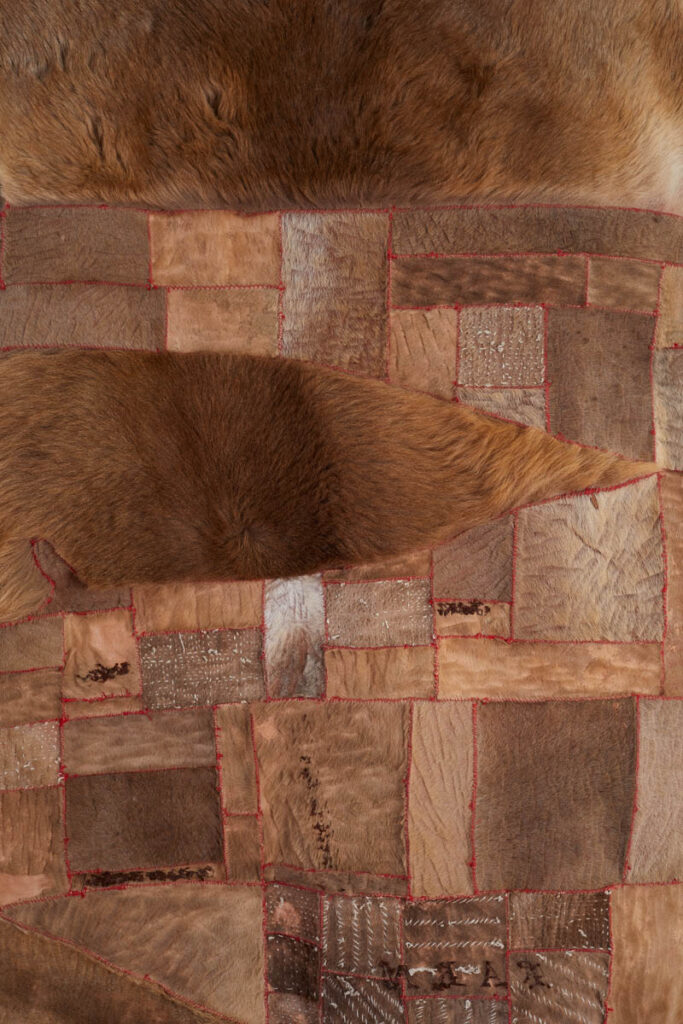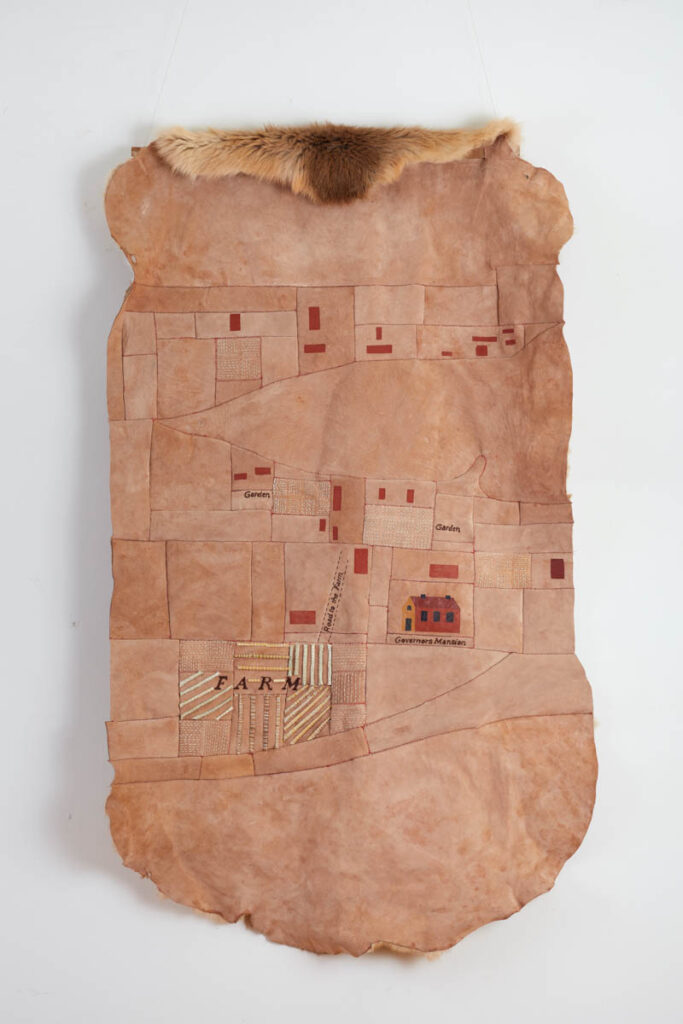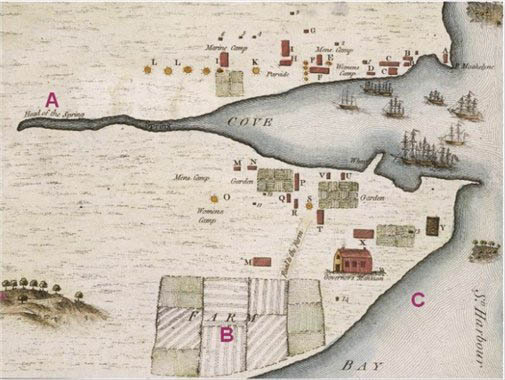
Beth Hatton, Patterns of Settlement (detail), 2022, kangaroo skin offcuts, corn and wheat stalks, acrylic paint, linen and cotton threads, various stitching techniques, 80 X 140 cm
Beth Hatton pieces together a map of Sydney Cove from kangaroo skin offcuts as a reflection on settlerism.
This work refers to a map of Sydney Cove and Port Jackson sketched by convict Francis Fowkes in April 1788. Fowkes’ emphasis on the archetypal elements of settlement—buildings, farm, gardens—evokes parallels in my own family history. In the early twentieth century, my grandparents were among the many Europeans whom Canada lured to its western prairies with the offer of free homesteads if they could fulfil the same basic requirements: build a home, plough at least 30 acres and cultivate crops on the property, all within three years.
Experience of my family’s craft traditions sparked my involvement in the fibre arts. Since migrating to Australia my special interests have been textile history, the meanings of materials, and recycling, with special reference to the impact of colonisation on the Australian environment.
Indigenous Australians traditionally made warm cloaks by trimming and stitching marsupial skins. Early colonists soon did the same, making coverings for bed and floor. So I decided to stitch a similar rug, using kangaroo skin offcuts discarded by the harvesting industry. To represent the logged and cultivated areas shown on the map, I cut the skins into rectangular shapes and trimmed away the fur before stitching the pieces together with red thread to signify the piercing and scarring of what had once been unbroken land.
Settlers destroy in order to create. Official histories have long celebrated the success of the early pioneers but today Australians and Canadians are more fully aware of how colonisation destroyed the lives and livelihoods of the indigenous people. Furthermore, the introduction of new land use practices proved harmful to the local ecologies. On the two sides of my rug, I try to suggest both the achievements and the devastation wrought by early settlement.
This work was displayed in Second Look: Remade and Reimagined Textiles at Barometer Gallery, 26 October – 13 November 2022.




